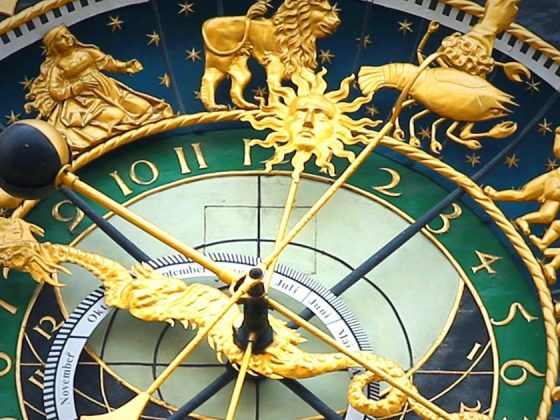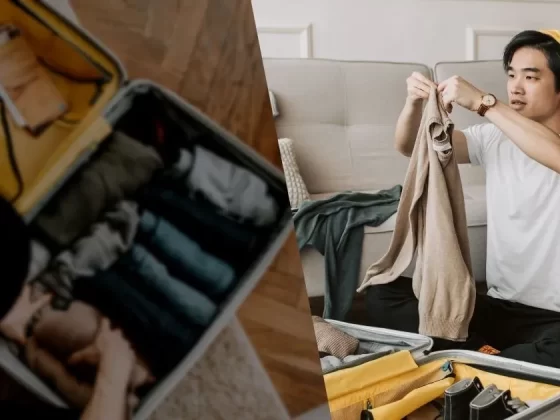Retro travel has re-emerged as a captivating trend, blending nostalgia with a modern appetite for meaningful experiences. From checkerboard motel floors and wood-panelled station wagons to velvet train seats and handwritten postcards, the revival of vintage-style getaways continues to gain momentum. This resurgence is not merely about movement but stepping into another time. Whether through the charm of a roadside inn, the romance of rail journeys, or the freedom of vintage road trips, nostalgia has become a new lens for exploration.
In an era defined by AI concierges, self-driving vehicles, and digital check-ins, the appeal of retro travel lies in its humanity. Analogue memories, tactile details, and slower rhythms offer a welcome contrast to the hyper-efficiency of modern mobility.
The Road Trip Renaissance
Autopilot itineraries and airport congestion have given way to a renewed interest in open-road travel. Classic cars, campervans, and refurbished VW buses now serve as icons of autonomy and escape. Curated playlists, neon-lit diners, and mid-century gas stations restore the storybook quality of a journey, creating narratives mile by mile.
The popularity of printed road maps and instant film photography underscores a desire to slow down. In contrast to GPS-guided precision, occasional detours are now embraced as part of the experience, with spontaneity reclaiming its place in the art of travel.
1. Rail Travel
Rail travel is experiencing a renaissance, not because of technological innovation or efficiency, but because of its ability to evoke emotion and craft experience. Unlike modern air travel—with its sterile terminals and rushed timelines—train journeys offer a slower, more ceremonious passage through space and scenery. This return to elegance is most visible in restored heritage routes and luxury rail services that reintroduce the art of travel as a destination.
Velvet-lined compartments, polished wood panelling, and brass fixtures lend a sense of intimacy and opulence rarely found in contemporary transportation. Each detail—the embroidered linen on dining tables and the vintage typography on boarding passes—contributes to a carefully preserved ambience. Boarding from classic station platforms, often with original signage and ironwork, enhances the sensation of stepping into a different era.
Routes such as the Venice Simplon-Orient-Express, the Rocky Mountaineer in Canada, or Japan’s Twilight Express Mizukaze offer more than a way to get from point A to B; they curate unfolding views of alpine peaks, rolling countryside, and coastal stretches that might otherwise remain unseen. Panoramic windows transform passing terrain into a living, breathing cinema, where no two views are alike, and the pacing invites reflection rather than urgency.
Dining cars evoke a timeless glamour—multi-course meals are served on real china, cocktails are shaken beneath amber lighting, and the gentle sway of the train adds rhythm to every conversation and clink of silverware. The sounds alone—the low rumble of the engine, the steady chime of a bell, the muted footsteps on the carpet—form an acoustic atmosphere of calm and continuity.
For those seeking a sensory-rich, narrative-driven journey, rail travel offers a depth that digital check-ins and overhead bins cannot. It is not just transportation—it is transformation through movement, memory, and mood.
2. Vintage Hotels with Soul
In today’s hospitality landscape, personality often holds more value than polish. Vintage hotels—whether reimagined motor lodges along scenic highways, opulent art deco landmarks, or minimalist mid-century escapes—offer more than shelter; they present carefully curated narratives. Each property becomes a storybook of design, history, and nostalgia, appealing to a growing desire for immersive, character-driven stays.
Rather than the predictable symmetry of contemporary chains, these hotels lean into charming idiosyncrasies. Original architectural details are preserved or reinterpreted—terrazzo floors, neon signage, wood-panelled lobbies, and mosaic-tiled bathrooms become focal points, not relics. Spaces are designed with intention, where every rotary phone or retro light fixture acts as a nod to a specific cultural moment.
Guest rooms often feature unexpected comforts: record players with curated vinyl collections, custom minibars stocked with glass-bottled sodas or local treats, and linen-covered guides to nearby diners or drive-in theatres. Candy-colored pool lounges and sun-bleached patios complete the visual story, conjuring the aesthetic of summer holidays past.
Beyond design, these properties have a sense of slowness—a deliberate contrast to fast check-ins and digital concierge services. Handwritten welcome notes, vintage key tags, and analogue clocks offer quiet moments of reflection, grounding the guest in a time before everything was instant.
These hotels do not merely host—they evoke. Each stay becomes an act of time travel, offering atmosphere over amenity, and presence over performance. In an industry often defined by sameness, vintage properties honour a well-worn past’s textures, tones, and temperaments.
3. Analogue Adventures in a Digital World
Amid an era shaped by rapid connectivity and screen-based convenience, analogue experiences are quietly reclaiming their place in the travel landscape. This shift reflects a growing cultural preference for tactile interaction, sensory depth, and moments of intentional slowness. Rather than optimising every journey for efficiency, the analogue revival invites engagement with the physical world, where every turn of a map or scratch of a pen becomes part of the narrative.
Notebooks now replace apps, offering space for thoughts, sketches, and mementoes without the distraction of notifications. Once rendered obsolete by GPS, foldable road maps return as both navigational tools and keepsakes, creased, marked, and stained by coffee or rain. Instant film cameras are valued for their tactile imperfections and spontaneous output, preserving moments outside the structures of digital storage and algorithmic curation.
Classic pastimes once relegated to childhood car rides—magnetic board games, mixtapes crafted for mood rather than shuffle, and letters written by hand—are making a thoughtful return. These analogue interactions foster presence, drawing attention back to the textures of travel: the rustle of paper, the click of a shutter, the feel of pen on postcard.
This revival is not merely aesthetic. It reflects a deeper cultural response to digital fatigue—a desire to reconnect with environments and experiences through slower, more mindful rituals. In this context, the analogue becomes more than nostalgic—it becomes necessary—a counterbalance to speed, a reassertion of the senses, a quieter, richer way of moving through the world.
4. Generational Nostalgia Meets Aesthetic Culture
The renewed interest in retro travel is not merely a longing for the past but a reimagining of it, shaped by aesthetic culture and generational reinterpretation. Vintage imagery has taken on a powerful symbolic value among those born well after the mid-century golden age. Through platforms rooted in visual storytelling, such as TikTok, Instagram, and Pinterest, retro-inspired travel moments have evolved into cultural touchpoints.
Scenes once commonplace—airstream trailers parked beneath desert skies, train journaling against mountain backdrops, pastel-colored motels with flickering neon signs—now circulate as carefully curated fragments of a collective daydream. These glimpses are not driven by lived memory, but by emotional resonance. Borrowed nostalgia enables participation in a time never experienced firsthand, yet deeply felt through visual codes, music, textures, and atmosphere.
Moodboards, vintage filters, and cinematic edits contribute to a layered, interpretive past—less a historical reconstruction than a sensory collage. A retro diner booth becomes not just a photo op but a portal to a world slower, softer, and seemingly more intentional. In this context, nostalgia operates not as a retreat but as an aesthetic language that allows for reinvention, creativity, and emotional depth.
This generational engagement with the past is less about authenticity than affect. It acknowledges that emotional truth can reside in imagined places and that style can function as memory. It repositions retro travel as a personal and collective expression, where longing, design, and cultural memory converge.
5. Industry Response: Designing for Nostalgia
The resurgence of retro travel has prompted a swift and strategic response across the travel and hospitality sectors. Recognising the growing demand for experiences rooted in atmosphere, memory, and design, many industry players have begun to infuse nostalgic elements into their offerings, not as novelty, but as deliberate aesthetic and emotional anchors.
Boutique hotels have emerged as key drivers of this trend, with interiors that blend restored architectural elements and period-specific décor. Checkerboard tiles, analogue thermostats, rotary telephones, and in-room vinyl collections are not seen as relics but desirable features that foster character and connection. Public areas frequently feature mid-century furnishings, retro signage, and era-specific soundscapes, turning standard accommodations into fully immersive, period-evocative environments.
Airlines and tour operators have followed suit, developing themed journeys referencing the golden age of travel. Retro uniforms, analogue meal menus, and historically inspired itineraries recreate the glamour once associated with 20th-century transit. These offerings are crafted to transport physically and evoke emotion, reframing travel as a story rather than a transaction.
Municipal tourism boards have also embraced this nostalgia-driven momentum. Efforts to restore vintage trolley lines, neon-lit diners, and train depots serve as preservation and promotion. Meanwhile, specialty rental services now offer pastel convertibles, classic station wagons, and camper vans with period-accurate interiors, transforming transportation into the aesthetic narrative.
What once stood on the periphery of modern travel—seen as outdated or impractical—is now being reframed as a premium experience. When designed with care and authenticity, nostalgia becomes more than a decorative theme; it becomes a means of storytelling, a tool for differentiation, and a powerful driver of emotional engagement within an increasingly commoditised industry.
Creating a Retro Travel Moment
Fully immersive retro travel may not always be practical, but individual elements can still add depth to a getaway:
- Choose accommodations with restored signage, vintage décor, and classic roadside charm.
- Curate a playlist using hits from the 1950s–1980s for drive-time ambience.
- Opt for physical journals and travel games over apps.
- Send handwritten postcards for a tangible memory.
- Incorporate vintage-inspired outfits to echo the era and enrich photos.
Adding even small analogue moments to a trip provides a sensory break from fast-paced, screen-centred travel.
When Yesterday Guides the Journey
Retro travel speaks to more than just aesthetic appeal—it addresses an emotional need. In a constant motion and digital overload culture, these nostalgic modes of exploration restore a sense of presence, humanity, and personal narrative. Whether through rail rides, classic cars, or timeworn motels, retro travel invites a more profound connection with place and self.
In this renewed rhythm of exploration, what’s old feels new again—not because it changes, but because it matters.















